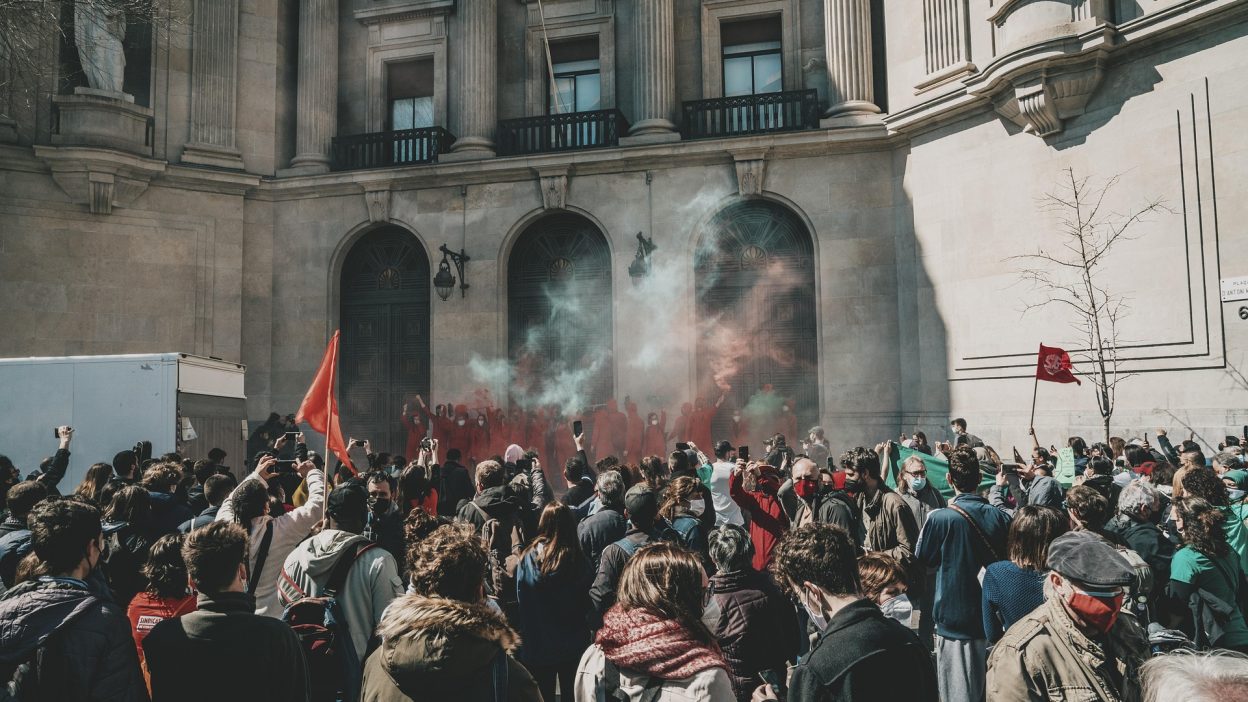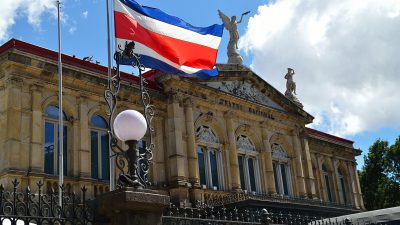Sweden’s Brutal Retreat That Shattered A Military Empire
1. The Carolean Death March: A Military Disaster in Norway, 1719
The Carolean Death March, which took place in the unforgiving winter of 1719, represents one of the most horrific and devastating events in Swedish military history. As part of the broader Great Northern War, the Swedish army, under King Charles XII, had suffered a crushing defeat in Norway. With no choice but to retreat, the Swedish soldiers found themselves on a treacherous journey across Norway’s rugged and snow-covered terrain, without adequate food, shelter, or warm clothing. The march that began as an attempt to find safety and regroup turned into a horrific ordeal of starvation, illness, and bitter cold.
This retreat, often overshadowed by other military events of the time, became a tragic symbol of Sweden’s faltering power. The soldiers, many already weakened from months of battle, were ill-prepared to face the harsh winter conditions. As the death toll mounted and the survivors staggered through snowdrifts and freezing temperatures, the Carolean Death March became a symbol of military miscalculation and the human cost of war.
2. Frozen in Time: The Silent Suffering of the Swedish Soldiers
The Carolean Death March is not only a story of military defeat but also one of profound human suffering. As the soldiers trudged through the dense forests and high mountains of Norway, their situation quickly grew desperate. With no resources to sustain them, they were forced to rely on dwindling supplies, which were soon exhausted. The marchers, growing weaker by the day, were unable to find enough food to stay alive, let alone maintain their strength to continue.
The pain and suffering of these soldiers were compounded by the bitter cold. Many of the men were poorly clothed for such an extreme climate, with many lacking the proper boots, coats, or blankets needed to survive. The relentless cold seeped into their bones, causing frostbite, and soon, it became clear that there would be no easy end to their suffering. As the days turned into weeks, the survivors became fewer and fewer, with many soldiers succumbing to the elements. The suffering of the soldiers was made even worse by their isolation; there was no escape from the harsh landscape, and no help would come. In these conditions, even the most resilient men were defeated by nature’s overpowering forces.
3. The Stark Reality of the Carolean Death March: The Death Toll and Devastating Losses
- A Grim Death Toll: The Carolean Death March resulted in the loss of an estimated 15,000 to 20,000 soldiers. The exact number of deaths remains unclear, but the sheer scale of the tragedy is undeniable. The majority of these deaths were caused by starvation, exposure to the cold, and disease. Many soldiers fell behind, unable to keep up with the group, and were left behind in the snow, where they perished in silence.
- Starvation and Hunger: One of the primary causes of death was starvation. As the Swedish soldiers retreated, their food supplies ran out quickly, and there were no opportunities to replenish them. Without food or water, the soldiers became increasingly weak, and many began to suffer from hunger-induced delirium. Some of the soldiers resorted to eating whatever they could find in the snow-covered wilderness, but this was not enough to sustain them for long.
- The Effects of Extreme Cold: The freezing temperatures took a heavy toll on the soldiers. Without proper clothing and shelter, frostbite was rampant, and many men lost fingers, toes, and even entire limbs. The cold was so extreme that even the strongest and most experienced soldiers were no match for it. As they stumbled through the snow, their bodies grew numb, and many collapsed from the effects of hypothermia, never to get up again.
- Disease and Infection: As the retreat continued, diseases began to spread among the soldiers. Dysentery and other infections were widespread, and the lack of proper medical care made it impossible for the soldiers to recover. In the harsh conditions of the march, even minor injuries turned into life-threatening wounds. The soldiers had no way to disinfect or treat their injuries, and many succumbed to simple infections that would have been treatable in more favourable circumstances.
4. The March of Despair: How the Retreat Turned into a Journey of Death
The Swedish retreat, which had started as a strategic military decision, quickly turned into a hopeless journey through some of the harshest terrain in Europe. As the soldiers marched through the Norwegian mountains, they realised just how ill-prepared they were. With no maps or knowledge of the land, they were forced to march blindly, following whatever route seemed best at the time. The lack of proper planning and the absence of strategic oversight meant that the army’s leaders were unable to adjust their course or tactics when it became clear that the conditions were overwhelming their troops.
The retreat itself, originally designed to be a temporary measure, became a slow and painful death march. Many of the soldiers lost their way in the snow, wandering off the path or becoming separated from their comrades. The long, drawn-out nature of the march wore down the soldiers’ morale, and by the time they realised the gravity of their situation, it was far too late. Those who were still able to march were barely able to keep moving, and those who had fallen behind were left to die in the snow, abandoned by the very army they had once fought for.
5. The End of Sweden’s Military Glory: How the Death March Changed the Course of History
The Carolean Death March is often seen as a pivotal moment in the decline of Sweden’s military might. The Swedish Empire, once one of Europe’s dominant powers, had suffered a significant defeat at the hands of the Russians and their allies, and the retreat through Norway signalled the beginning of Sweden’s downfall. The catastrophic losses suffered during the march would have lasting effects on Sweden’s military capabilities and national prestige. The surviving soldiers, scarred both physically and mentally, were forever changed by the horrors they had endured, and the Swedish military would never recover to its former strength.
This military disaster exposed the limitations of Swedish power and revealed deep flaws in the strategic planning of Sweden’s military campaigns. The loss of so many soldiers in such a senseless manner marked a dramatic shift in Sweden’s fortunes. While the Swedish Empire had once been a dominant force in European affairs, the death march highlighted the vulnerability of the empire’s military structure and its inability to adapt to the realities of modern warfare. As a result, Sweden’s influence began to wane, and its military might faded into history.
6. A Deadly Combination: War, Weather, and Mismanagement
The Carolean Death March was the result of a lethal combination of factors: war, weather, and mismanagement. The Swedish army, already weakened from months of battle, was sent on a retreat through the Norwegian wilderness without adequate preparation for the challenges they would face. The leadership, tasked with ensuring the survival of the army, failed to anticipate the severity of the winter conditions and the harsh terrain they would have to navigate.
The soldiers were inadequately dressed for the freezing temperatures and were given little food or shelter during the retreat. What should have been a temporary and well-organised withdrawal turned into an unplanned and desperate fight for survival. The combination of poor planning, inadequate supplies, and a relentless natural environment made survival nearly impossible for the soldiers. As the cold and hunger took their toll, the soldiers were reduced to mere shadows of their former selves, and the march became a desperate scramble for survival rather than a tactical retreat.
7. The Forgotten Soldiers: Why the Suffering of the Caroleans Was Overlooked
- Historical Neglect: Despite the immense suffering and loss of life, the Carolean soldiers who perished during the march are largely forgotten in history. While the Great Northern War itself is well-documented, the individual stories of the soldiers who died during the retreat have been overshadowed by more prominent events of the war. The tragedy of the Carolean Death March has never received the recognition it deserves, and the soldiers who died have largely been overlooked in historical accounts.
- Unacknowledged Heroes: The soldiers who marched through the harsh Norwegian wilderness, suffering and dying along the way, are forgotten heroes in the grand narrative of Swedish history. Their sacrifices were not only the result of military defeat but also the failure of leadership and planning. These men, who gave their lives in an attempt to survive and retreat, deserve more recognition for their efforts.
8. The Causes of the Carolean Death March: Was It Mismanagement or Fate?
One of the enduring questions surrounding the Carolean Death March is whether it was the result of mismanagement or a series of unfortunate events. Many historians argue that the Swedish leadership failed to adequately plan for the retreat, leaving their soldiers ill-prepared for the harsh conditions they would face. The lack of supplies, inadequate clothing, and poor organisation all contributed to the disaster. Had the commanders taken the time to properly plan and provide for their soldiers, the death toll may have been much lower.
However, others argue that fate played a significant role in the tragedy. The harsh Norwegian winter was a force of nature that no amount of preparation could fully overcome. The soldiers were facing a situation where even the best preparations might not have been enough. In the end, it was a combination of military misjudgement and the unforgiving environment that led to the deaths of thousands of soldiers.
9. From Glory to Disaster: The Ultimate Collapse of the Carolean Army
The Carolean Death March is a tragic reminder of the fragility of military power. At its peak, the Swedish army was one of the most powerful military forces in Europe, and the Carolean soldiers were considered elite. But the disastrous retreat through Norway shattered this image. The
once-mighty Swedish army, which had fought with great success in earlier battles, found itself broken, depleted, and vulnerable in the face of harsh conditions.
This collapse marked the end of the Carolean army’s reign of power. It became clear that the Swedish military had reached its limits, and the loss of so many soldiers in a single campaign was a turning point in Sweden’s military history. The defeat, coupled with the death march, led to Sweden’s eventual decline as a European power. The once-feared Carolean soldiers would never again regain their former glory, and the legacy of their suffering during the retreat through Norway became an indelible part of Swedish history.
10. Conclusion: The Legacy of the Carolean Death March
The Carolean Death March is a harrowing tale of survival, tragedy, and loss. The events that unfolded during this march are a powerful reminder of the extreme costs of war and the unpredictable forces of nature. The thousands of soldiers who perished along the way were the victims of both military miscalculations and a merciless winter. Their deaths are a stark reflection of the harsh realities faced by soldiers during wartime and a tragic chapter in Swedish history.
Though largely forgotten by modern history, the Carolean soldiers who perished in the snow and cold deserve recognition for their sacrifices. The lessons learned from the Death March should serve as a warning to future generations about the importance of proper military preparation and the unforgiving nature of war. The Carolean Death March remains a powerful symbol of the fragility of military power and the devastating consequences of military mismanagement.
FAQs
1. What caused the Carolean Death March?
The Carolean Death March was caused by a combination of poor military planning, harsh weather, and the exhaustion of the Swedish army after suffering a major defeat. The soldiers were ill-prepared for the extreme cold and were left without sufficient food or shelter.
2. How many soldiers died during the retreat?
An estimated 15,000 to 20,000 soldiers died during the retreat, most due to starvation, exposure to the cold, and disease.
3. What was the role of the Swedish leadership in the death march?
The Swedish leadership failed to properly prepare for the harsh conditions of the retreat. They underestimated the challenges posed by the Norwegian terrain and the winter, leading to catastrophic losses.
4. Why is the Carolean Death March largely forgotten?
The Carolean Death March has been overlooked in history due to its overshadowing by other military events of the Great Northern War. The individual stories of the soldiers have been largely forgotten in the broader narrative.5. What was the long-term impact of the Carolean Death March?
The Carolean Death March marked the beginning of Sweden’s military decline, as it exposed the limits of Swedish power and weakened the Swedish army. It played a key role in shifting the balance of power in Europe during the 18th century.




